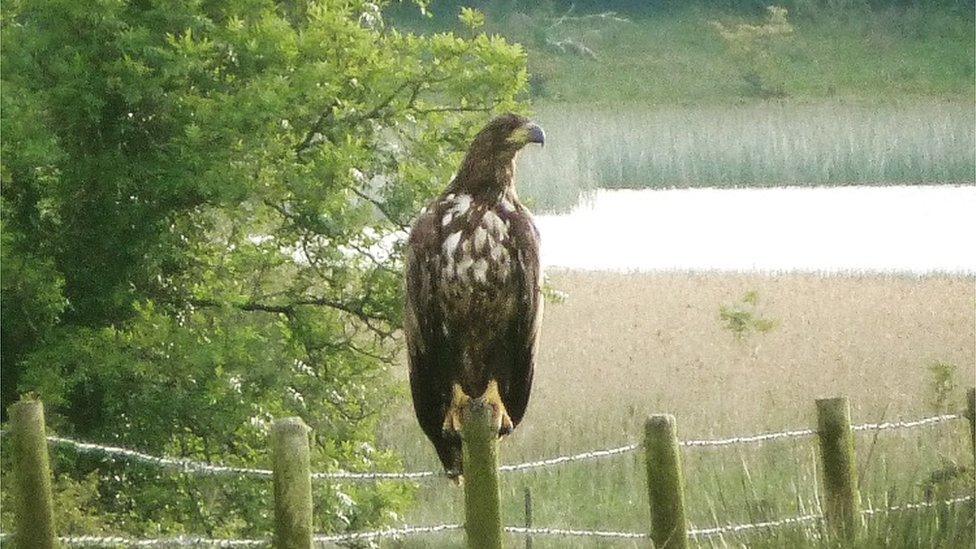Sea eagles reintroduced to England for first time since 1780
- Published
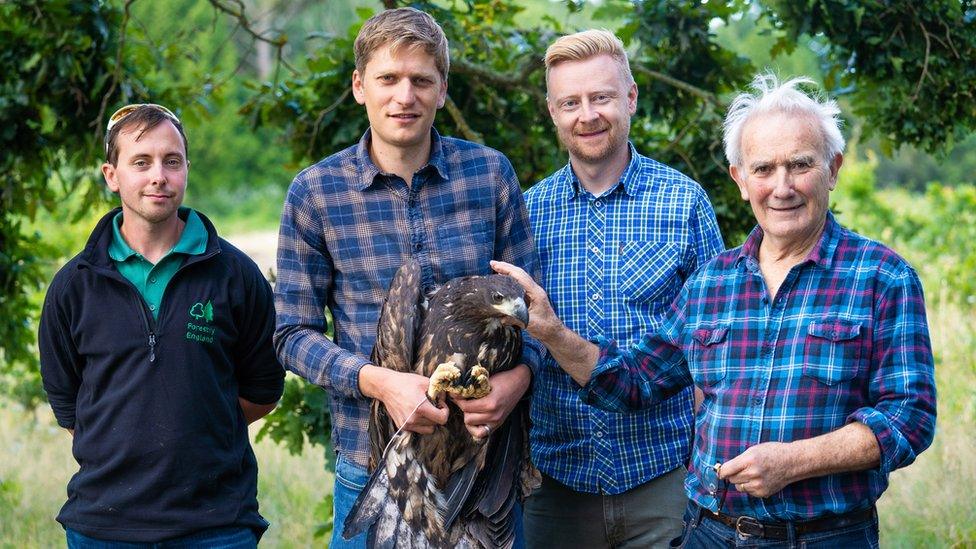
The birds were checked over by the team and fitted with small satellite trackers prior to being released
White-tailed eagles have been reintroduced on the Isle of Wight, 240 years after they were last recorded in England.
Also known as sea eagles, they are the UK's largest bird of prey, with a wingspan of up to 8ft (2.5m).
Three pairs of the birds were released in a secret location on the island on Wednesday and Thursday.
The five-year-project will see at least six birds released annually but they are not expected to breed until 2024.
White-tailed eagles were once widespread across the UK, but were wiped out about a century ago.
A similar scheme in Scotland has proved a success and there are now more than 130 breeding pairs.
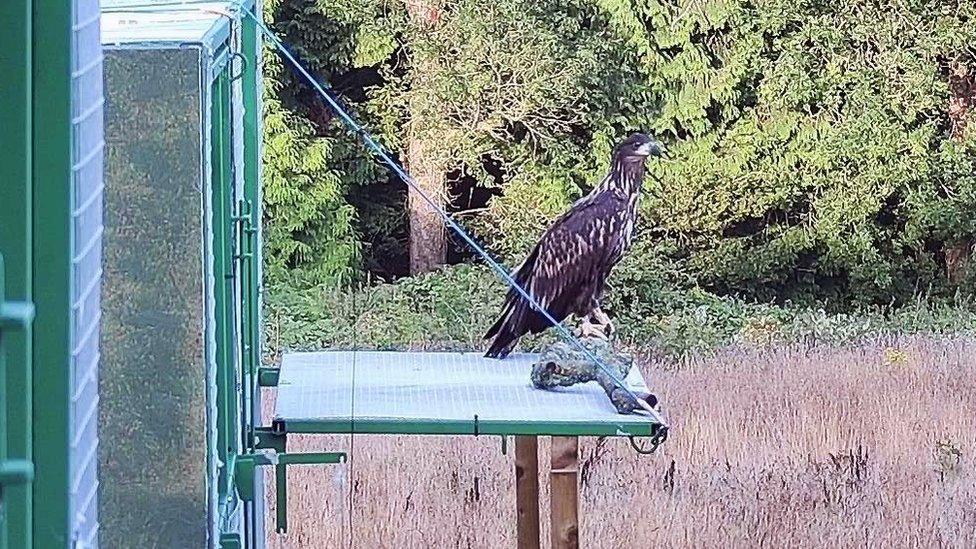
The young birds were collected from Scotland and brought to the Isle of Wight
The last known breeding pair in England were recorded at Culver Cliff on the Isle of Wight in 1780.
The six released birds were collected from the wild in Scotland and brought to the Isle of Wight, where they have been kept in a pen to familiarise themselves to their new surroundings.
Natural England granted a licence in April to the Roy Dennis Wildlife Foundation for the reintroduction programme.
While they become established, the birds will be closely monitored using satellite tracking devices and viewing areas may be set up to allow visitors to observe the birds.
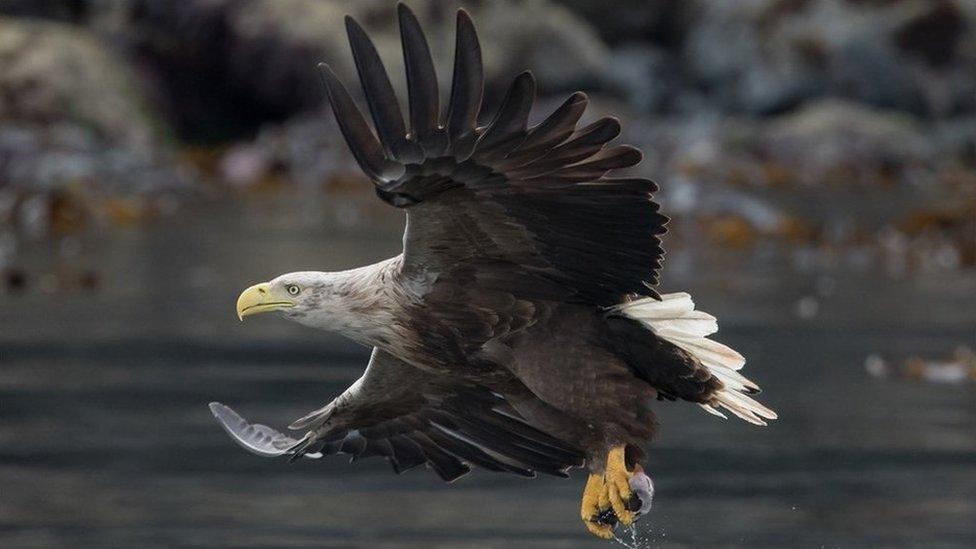
White-tailed eagles feed mainly on fish and water birds
The Isle of Wight was chosen for its variety of potential nesting sites in woods and cliffs, from where it is hoped the birds will disperse along the south coast.
Conservationist Roy Dennis said: "Establishing a population in the south of England will link and support emerging populations in the Netherlands, France and Ireland, with the aim of restoring the species to the southern half of Europe."
Natural England said there was "no evidence" of eagles preying on lambs where they live alongside lowland sheep farms in Europe.
- Published3 April 2019
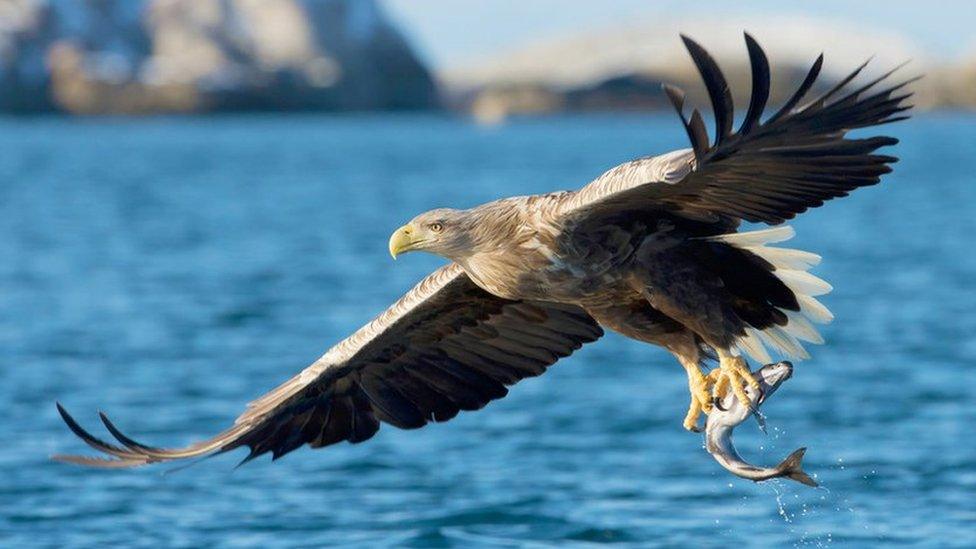
- Published2 April 2019
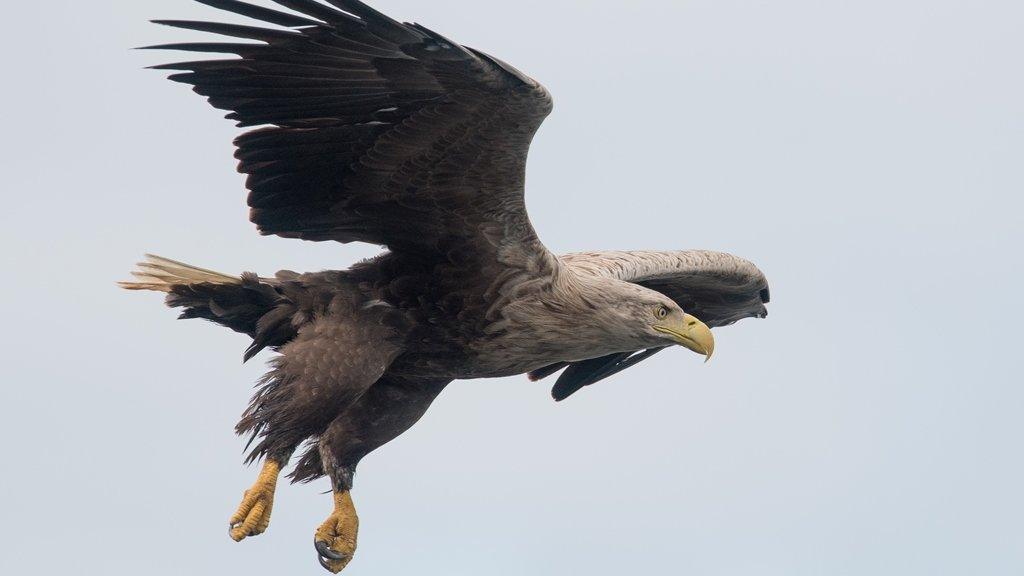
- Published20 November 2018
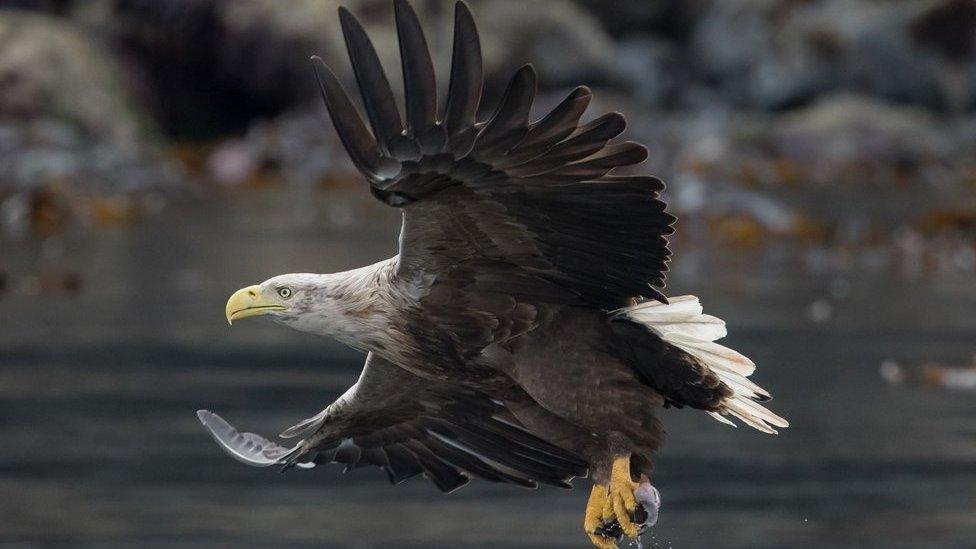
- Published9 August 2018
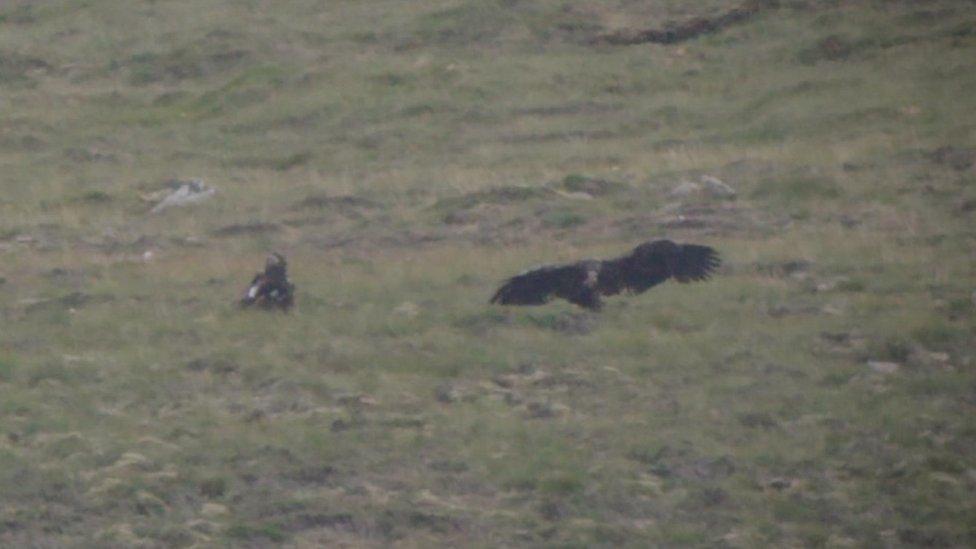
- Published14 June 2018
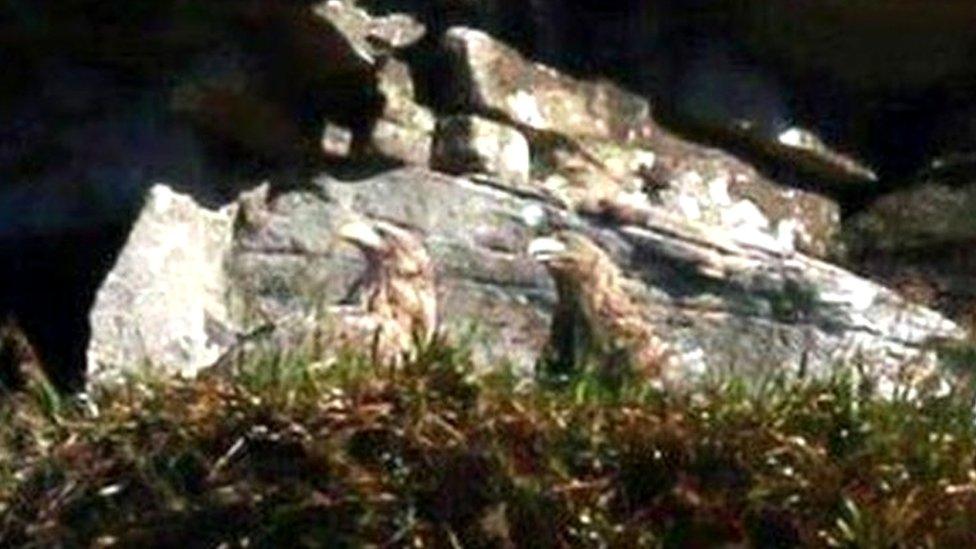
- Published19 April 2018
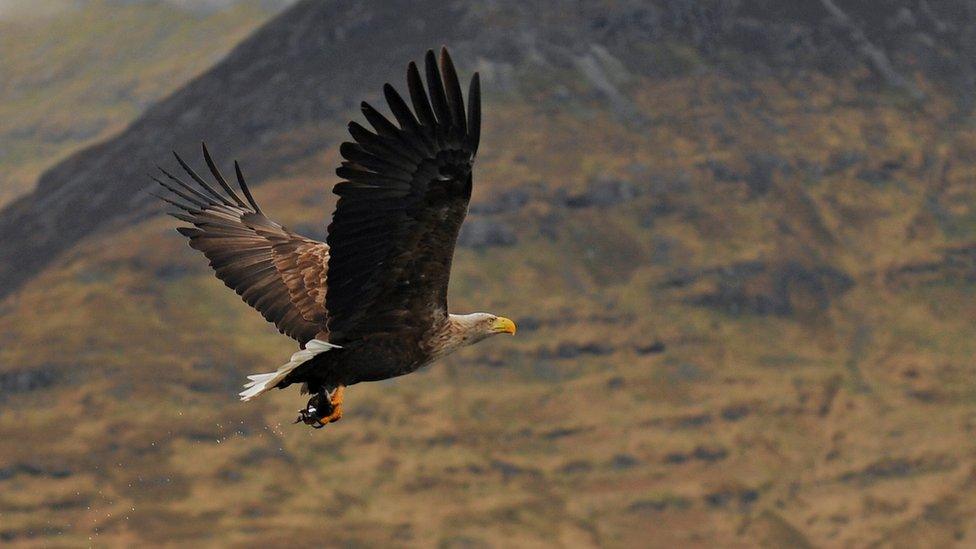
- Published5 January 2018
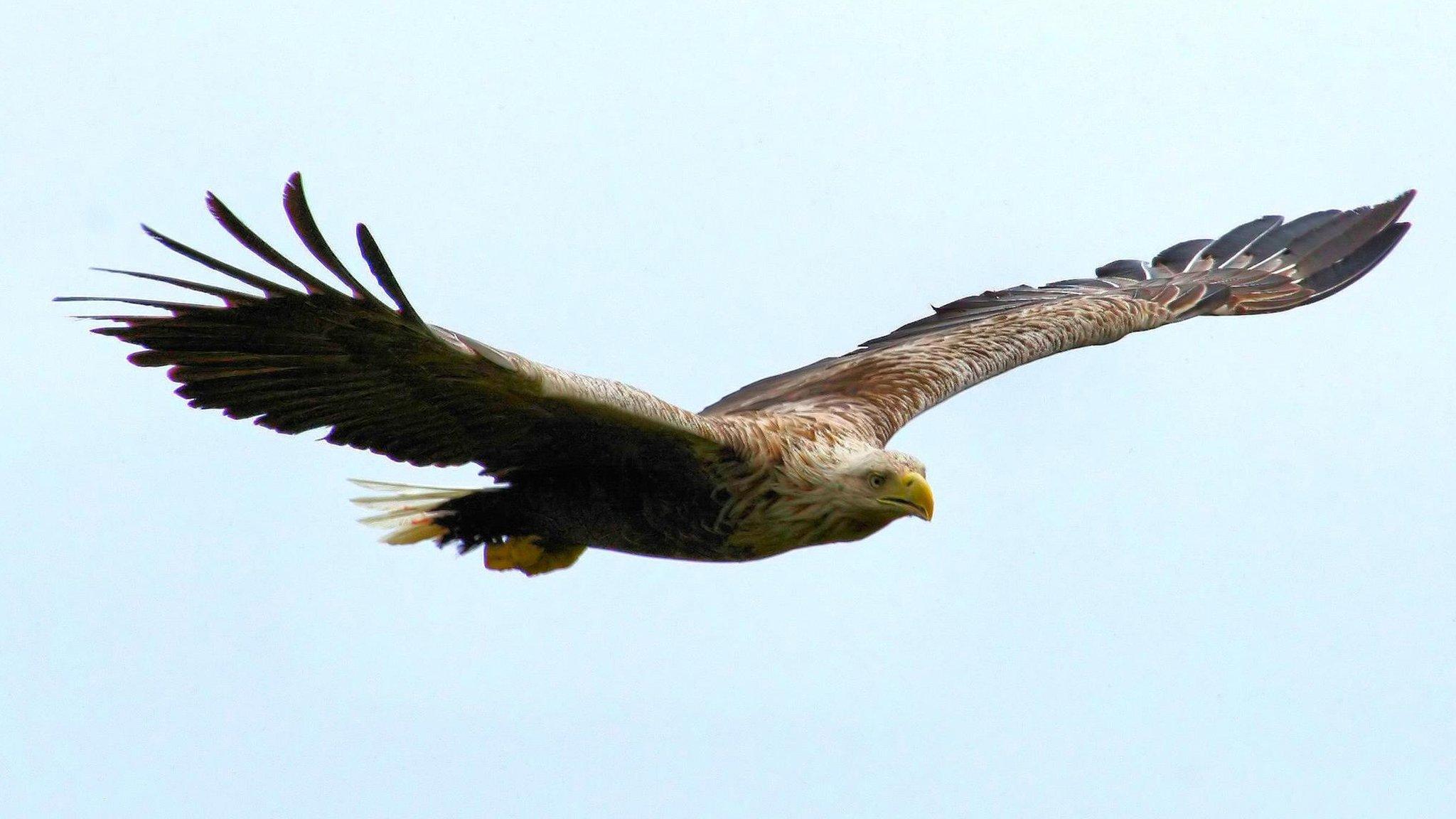
- Published15 November 2017

- Published14 July 2017
